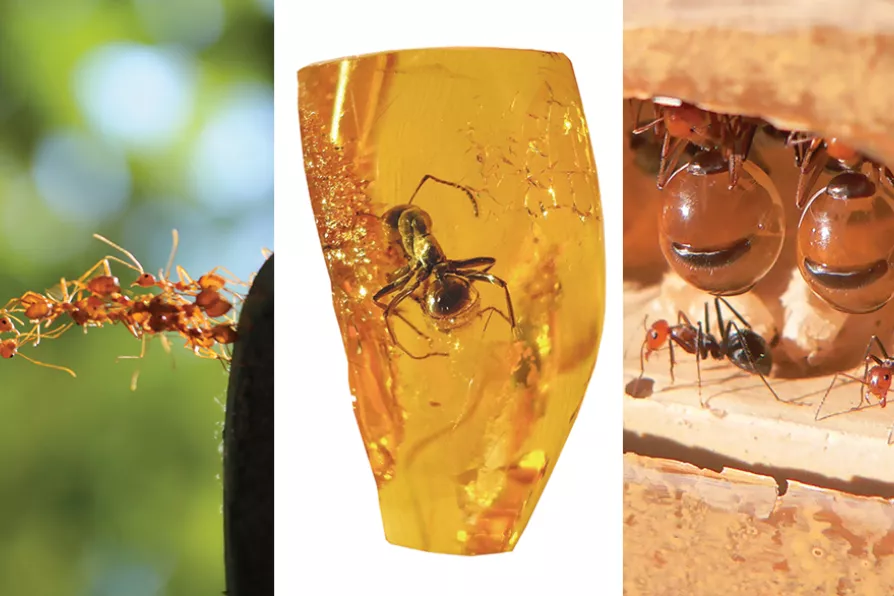SOLOMON HUGHES finds the government went along with a US scheme to distract from Israel’s lethal Gaza blockade with an impractical floating pier scheme – though its own officials knew it wouldn’t work

 ANCIENT KNOW-HOW, PLANNING AND TEAM EFFORT: (L to R) Bridge building; Fossil ant in Baltic amber, age about 50 million years, Eocene; Myrmecocystus ants storing nectar to prevent colony famine
[(L to R) Igor Chuxlancev-Anders L Damgaard-Greg Hume all CC]
ANCIENT KNOW-HOW, PLANNING AND TEAM EFFORT: (L to R) Bridge building; Fossil ant in Baltic amber, age about 50 million years, Eocene; Myrmecocystus ants storing nectar to prevent colony famine
[(L to R) Igor Chuxlancev-Anders L Damgaard-Greg Hume all CC]
COMPLEX multicomponent societies rely principally on communication. Researchers suggest that evidence of 100 million years of communication gives us a deeper insight into the evolution of ant sociality.
Emergent properties of groups occur when many things interact to produce effects that are not seen in the case of the isolated individual element.
From simple things like waves and crystals, to complex ones like swarms and consciousness, these effects are ubiquitous.

New research into mutations in sperm helps us better understand why they occur, while debunking a few myths in the process, write ROX MIDDLETON, LIAM SHAW and MIRIAM GAUNTLETT

GORDON PARSONS is enthralled by an erudite and entertaining account of where the language we speak came from












